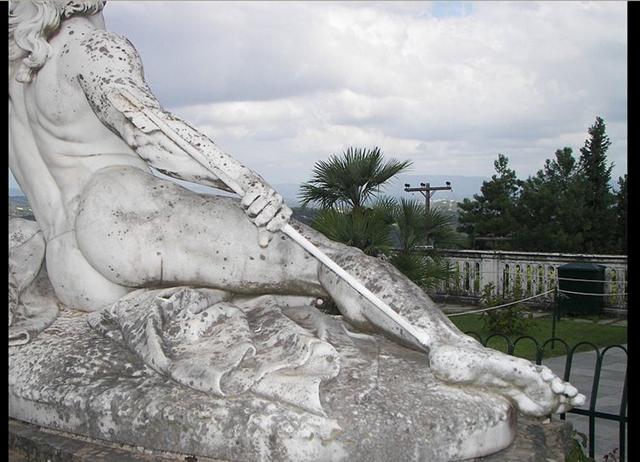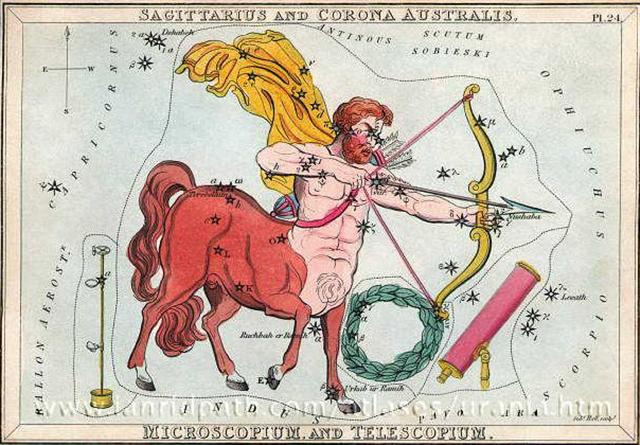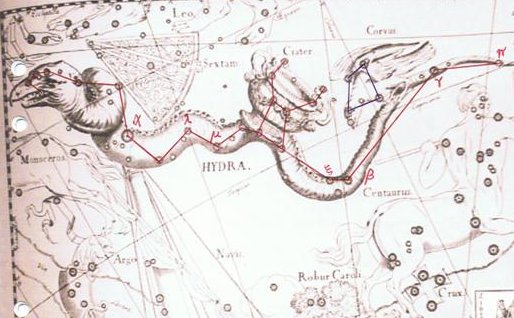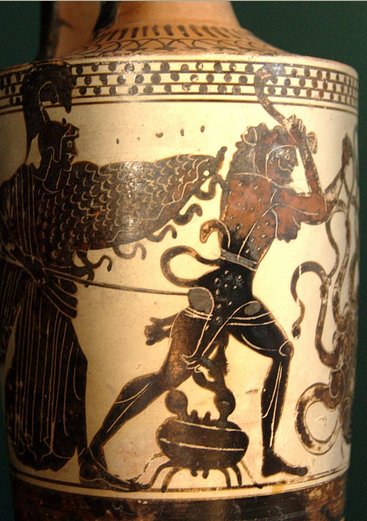When
the tablet is turned
around (inverted
with line b1at
bottom on side b) we
can expect to
perceive some
differences in the
glyphs. Maybe we
have to follow the
nakshatra side -
that was my
perception when
moving from side
a to side b on
the Mamari
tablet.
 |
 |
 |
 |
 |
|
Ga8-22 (225) |
Ga8-23
(*290) |
Ga8-24 |
Ga8-25 |
Ga8-26 |
|
19h (289.2) |
Al
Baldah-19 |
Aladfar
(291.1),
Nodus II
(291.5), ψ
Sagittarii
(291.6), θ
Lyrae
(291.8) |
ω Aquilae
(292.1), ρ
Sagittarii
(292.6), υ
Sagittarii
(292.7) |
Arkab Prior
(293.0),
Arkab
Posterior,
Alrami
(293.2), χ
Sagittarii
(293.6) |
|
λ Aquilae
(Ant.)
(289.1), γ
Cor. Austr
(289.3), τ
Sagittarii
(289.4), ι
Lyrae
(289.5), δ
Cor. Austr.
(289.8)
|
AL BALDAH,
Alphekka
Meridiana
(290.1), β
Cor. Austr.
(290.2) |
|
Tua Haro
4 |
5 |
6 |
7 (372) |
8 |
|
ºDecember
31 |
ºJanuary
1 (366) |
2 |
3 |
4 |
|
'December
8 |
9 |
10 |
11
(*265) |
12 |
|
'Ko Koró
8 |
9 |
10 |
11
(345) |
12 |
|
"November
24 |
25
(*249) |
26 |
27 (331) |
28 |
|
7h (106.5) |
Wezen
(107.1), τ
Gemini
(107.7), δ
Monocerotis
(107.9) |
no star
listed (108) |
λ Gemini
(109.4),
Wasat
(109.8) |
no star
listed (110) |
|
no star
listed (106) |
|
He Anakena
5 |
6 |
7 (188) |
8 |
9 |
|
ºJuly
1 |
2 |
3 |
4 (185) |
5 |
|
'June
8 |
9 |
10 |
11 (*82) |
12 |
|
'He Maro
8 |
9 |
10 |
11 (162) |
12 |
|
"May
25 (*65) |
26 |
27 |
28 (148) |
29 |
According to the
Gregorian calendar
July 1 was visible
in the nakshatra sky
(close to the Full
Moon) at the glyph where the
night time sky (ragi)
had changed place
with the nuku
figure, at
heliacal December 31.
| Ragi
Ra'i, T. 1. Sky. 2. Palace. 3. Prince. Henry.
1. Sky, heaven, firmament; ragi moana, blue
sky. 2. Cloud; ragipuga, cumulus; ragitea, white,
light clouds; ragi poporo, nimbus; ragi hoe ka'i
cirrus (literally: like sharp knives); ragi viri, overcast
sky; ragi kerekere, nimbus stratus; ragi kirikiri miro,
clouds of various colours. 3. To call, to shout, to exclaim. Vanaga.
1. Sky, heaven, firmament, paradise; no te ragi,
celestial. 2. Appeal, cry, hail, formula, to invite, to send for,
to notify, to felicitate, precept, to prescribe, to receive, to
summon; ragi no to impose; ragi tarotaro, to menace,
to threaten; tagata ragi, visitor; ragikai, feast,
festival; ragitea, haughty, dominating. 3. Commander. 4. To
love, to be affectionate, to spare, sympathy, kind treatment;
ragi kore, pitiless; ragi nui, faithful. Churchill.
Modoc, a language used on the northwest
coast of North America: 'A single word, lagi, was used both
for the chief and for a rich man who possessed several wives,
horses, armour made of leather or wooden slats, well-filled quivers
and precious firs. In addition to owning these material assets, the
chief had to win military victories, possess exceptional spiritual
powers and display a gift for oratory.' (The Naked Man) |
However, in rongorongo
times the true position of this birth ought to have come 4 nights later, in
He Anakena 10 (190). 12 * 19 = 228 and 1 + 228 = 229.
The Arkab pair of
β stars in Sagittarius were considered as the
only vulnerable spot of Achilles, and his outstretched leg may have
corresponded to the outstretched leg of Schemset and possibly also to
that in Ga7-33 (in
what could be
the 28th night of Mauri). 
"β¹
and β², Arkab
and Urkab are
from Al 'Urkūb,
translated by Ideler
as the Tendon
uniting the calf of
the leg to the heel,
and this coincides
with their location
in the figure on
modern maps, as well
with their
Euphratean title
Ur-ner-gub, the
Sole of the Left
Foot ..." (Allen)

Beyond the first 3
glyphs on side b a
new story could
begin. Though Gb1-1 shows
it is connected with the
previous part of the
text, this
we can see by
comparing with
Gb8-16:
|
Antares
at the
time of
rongorongo: |
|
Rising
in the
east at
sunset |
June 1 (152) |
0 |
0 |
|
15 days from winter solstice |
July 6
(187) |
35 |
35 |
|
Culmination
at
midnight |
July 11
(192) |
5 |
40 |
|
'Leap
day' |
July 12 (193) |
1 |
41 |
|
Heliacal rising |
November
25 (329) |
136 |
177 |
|
Nakshatra day |
May 28
(148) |
184 |
361 |
 |
 |
 |
 |
 |
| Gb1-4 |
Gb1-5 |
Gb1-6 |
Gb1-7 (236) |
Gb1-8 |
| ε Sagittae (297.1), σ Aquilae (Ant.) (297.4), Sham (297.8) |
β Sagittae (298.0), χ Aquilae (298.3), ψ Aquilae (298.8) |
υ Aquilae (299.1), Tarazed (299.3), δ Sagittae (299.6), π Aquilae (299.9) |
Sravana-23 |
ι Sagittarii (301.2), Terebellum, ξ Aquilae (301.3), Alshain (301.6), φ Aquilae (301.8) |
| ζ Sagittae (300.1), ALTAIR (300.3), ο Aquilae (300.5), Bezek (300.8) |
| υ Gemini (114.0), Markab Puppis (114.7), ο Gemini (114.8), Procyon (114.9) |
α Monocerotis (115.4), σ Gemini (115.7) |
κ Gemini (116.1), POLLUX (116.2), π Gemini (116.9) |
Azmidiske (117.4) |
φ Gemini (118.4) |
 |
 |
 |
 |
 |
| Gb1-9 |
Gb1-10 |
Gb1-11 (240) |
Gb1-12 |
Gb1-13 |
| ε Pavonis, θ Sagittarii (302.3), γ Sagittae (302.5), μ Pavonis (302.7) |
τ Aquilae (303.8) |
20h (304.4) |
Shang Wei (305.2), θ Sagittae (305.4), Tseen Foo (305.6), ξ Capricorni (305.8) |
Tso Ke (306.3) |
| η Sagittae (304.2), δ Pavonis (304.4) |
| Drus (119.9) |
ω Cancri (120.2) |
8h (121.7) |
ρ Puppis (122.0), Heap of Fuel (122.1), ζ Monocerotis (122.3), ψ Cancri (122.6), Regor (122.7) |
Tegmine (123.3) |
| χ Gemini (121.0), Naos (121.3) |
We
remember the Cancer
stars Heap of
Fuel, Tegmine etc
from the time of their heliacal
positions. Instead of 10 days
beginning beyond
nakshatra Castor (at
Gb1-3) it
seems reasonable to
continue with 'one more'
night to nakshatra Al
Tarf (The End) - and
to the midnight
culmination of Ras
Algethi (α
Herculis). Or
possibly to move
ahead even further:
 |
 |
 |
 |
|
Ga2-24 |
Ga2-25 |
Ga2-26
(56) |
Ga2-27 |
|
φ Gemini
(118.4) |
Drus
(119.9) |
ω Cancri
(120.2) |
8h
(121.7) |
|
χ Gemini
(121.0),
Naos
(121.3) |
|
July 17
(*118) |
18 |
19 (200) |
July
20 (201) |
|
ºJuly 13 |
14 (195) |
15
(*116) |
ºJuly 16 |
|
'June 20
(171 -
80 + 366
= *457) |
Solstice |
22 (*93) |
'June 23
(*460) |
|
"June 6
(*77) |
7 (*444) |
8 (525) |
"June 9
(*80) |
|
ι
Sagittarii
(301.2),
Terebellum,
ξ
Aquilae
(301.3),
Alshain
(301.6),
φ
Aquilae
(301.8) |
ε
Pavonis,
θ
Sagittarii
(302.3),
γ
Sagittae
(302.5),
μ
Pavonis
(302.7) |
τ
Aquilae
(303.8) |
20h
(304.4) |
|
η
Sagittae
(304.2),
δ
Pavonis
(304.4) |
|
January
16
(*301) |
17 |
18 (383) |
January
19
(*304) |
|
ºJanuary
12 |
13 (378) |
14
(*299) |
ºJanuary
15
(*300) |
|
'December
20 (354) |
Solstice |
22 |
'December
23
(*277) |
|
"December
6 (*260) |
7 |
8 (342) |
"December
9 |
 |
 |
 |
 |
|
Ga3-2
(61) |
Ga3-3 |
Ga3-4 |
Ga3-5 |
|
χ Cancri
(125.2),
Bright
Fire
(125.4) |
Avior
(126.4),
φ Cancri
(126.8) |
ο Ursa
Majoris
(127.4) |
Pushya-8 |
|
υ Cancri
(128.1),
θ CANCRI
(128.2),
η Cancri
(128.5) |
|
July 24
(*125) |
25 |
26 |
27 (208) |
|
ºJuly 20
(*121) |
21 |
22 |
23 (204) |
|
'June 27 |
28
(*465) |
29
(*100) |
30 (181) |
|
"June 13
(*84) |
14 (165) |
15 |
16 |
|
Al
Sa’d al
Dhabih-20
/
Ox Herd
Boy-9 |
Okul
(309.6),
Bos
(309.9)
Arneb |
ο
Capricorni
(310.2),
θ Cephei
(310.5)
Alnilam |
Rotten
Melon, φ
Pavonis
(311.2),
η
Delphini
(311.4),
ζ
Delphini,
ρ
Pavonis
(311.7)
Phakt |
|
DABIH
(308.0),
κ
Sagittarii
(308.1),
Sadir
(308.4),
Peacock
(308.7) |
|
January
23 (388) |
24 |
25
(*310) |
26 |
|
ºJanuary
19
(*304) |
20 (385) |
21 |
22 |
|
'December
27 |
28 |
29
(*283) |
30 (364) |
|
"December
13
(*267) |
14 |
15 |
16 (350) |
 |
 |
 |
 |
 |
 |
|
Gb1-14 |
Gb1-15 |
Gb1-16 |
Gb1-17 |
Gb1-18 |
Gb1-19
(248) |
|
Gredi
(307.2),
σ
Capricorni
(307.5),
Alshat
(307.9) |
Al
Sa’d
al
Dhabih-20
/
Ox
Herd
Boy-9 |
Okul
(309.6),
Bos
(309.9)
Arneb |
ο
Capricorni
(310.2),
θ
Cephei
(310.5)
Alnilam |
Rotten
Melon,
φ
Pavonis
(311.2),
η
Delphini
(311.4),
ζ
Delphini,
ρ
Pavonis
(311.7)
Phakt |
Rotanev,
ι
Delphini
(312.3),
τ
Capricorni
(312.6),
κ
Delphini
(312.7),
SVALOCIN,
υ
Capricorni,
υ
Pavonis
(312.8) |
|
DABIH
(308.0),
κ
Sagittarii
(308.1),
Sadir
(308.4),
Peacock
(308.7) |
|
Al
Tarf
(124.3)
Ras
Algethi |
χ
Cancri
(125.2),
Bright
Fire
(125.4) |
Avior
(126.4),
φ
Cancri
(126.8) |
ο
Ursa
Majoris
(127.4) |
Pushya-8 |
Āshleshā-9
/
Willow-24 |
|
υ
Cancri
(128.1),
θ
CANCRI
(128.2),
η
Cancri
(128.5) |
π¹
Ursa
Majoris,
δ
HYDRAE (129.6),
Al
Minhar
al
Shujā,
Museida
(129.9) |
My
imagination
points at
the pair of
upside down
haati
(sacrificed
limbs) and
to the
following
hakaturou
fishhook and
says the
upside down southern
hemisphere
will
here receive
a new Moon
(2) land,
drawn up
from the
deeps.
Because here the
Sun was like
a Rotten
Melon and
the Nose of
the Hydra
(Al Minhar
al Shujā, σ
Hydrae)
could be
seen close
to the Full
Moon.

North of the
equator
there was a
flying
(feathered)
serpent
(dragon) and
south of the
equator
there was a
swimming
serpent
(hydra). In
the world
between
there was
the Crab (or
Turtle):
... It is
the most
inconspicious
figure in
the zodiac,
and
mythology
apologizes
for its
being there
by the story
that when
the Crab was
crushed by
Hercules,
for pinching
his toes
during his
contest with
the Hydra in
the marsh of
Lerna, Juno
exalted it
to the sky;
whence
Columella
called it
Lernaeus.

Yet few
heavenly
signs have
been
subjects of
more
attention in
early days,
and few
better
determined;
for,
according to
Chaldaean
and
Platonist
philosophy,
it was the
supposed
Gate of Men
through
which souls
descended
from heaven
into human
bodies ...
|


























